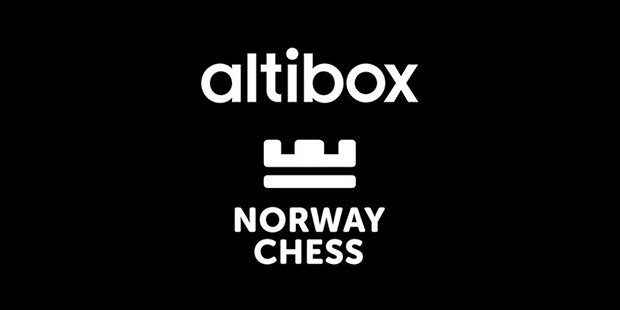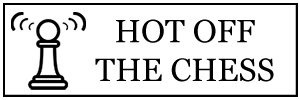
A few days ago, the organisers of the Norway Chess Tournament, announced that they are changing the tournament’s format for the 2019 edition. Having already brought innovations, such as the blitz round to decide the draw, and the confessional booth, the event, (to be held in June of next year), is looking to stir things up even further. For next year’s tournament, they will be introducing two changes to the rules.
Firstly, out goes the usual time control for a classical tournament. As we know, this tends to consist of two periods in which a specific number of moves must be made in a specific number of minutes. After this, the players normally get time added on in which to complete the game. And in the meantime, they have most likely picked up increments of added time at each move made.
In Norway’s case, this worked out as: ‘…100 min. for 40 moves + 50 min. for 20 moves, + 15 min. for the rest of the game with an increment of 30 seconds per move, starting from move 61.’ The 2019 edition of the tournament sees this being replaced with a new, fixed time of two hours per player, for the whole game. And, there will be no increments at all.
Personally, I think that this will be felt quite severely, especially by those who have a problem with their time management. For them, the added time and increments is something that they feature in their playing rhythm and see as something of a safety net if you like. ‘Two hours and that’s your lot’, probably is not going to sit too well. The same for the players who like to have a deep think here and there, knowing that they will get more time later.
Obviously, strict thinking time is bound to feature in the considerations of those who don’t rely on theory so much and just like to play. We may actually see some players using this as a tactic and getting their opponent out of book as early as possible. This could be potent, especially when playing Black and might produce a surprise or two.
The other amendment, is that all drawn games will see a follow-up Armageddon game played. This will take place very shortly after the end of the classical game, with the colours unchanged. Of course, Armageddon games are always decided, with White getting six-minutes and Black five, but White having to win.
In their press release, the organisers of Norway Chess, said that their aim with these measures, “…is to create a tournament with fewer draws per game, create more excitement for spectators and put more pressure on the players.” Great intentions! However, as the saying goes, the road to hell is paved with those. And these changes are certainly provoking mixed reactions.
And I have to say, I understand this completely, especially when it comes to the Armageddon game. When I first heard about it, I was very positive, but am now rather on the fence. I had assumed that only full points would be awarded and that the Armageddon game would replace the drawn classical game. Therefore, if a player makes a draw, they would risk not scoring in that round. However, this is not the case.
Points available per round:
Victory Classical Game: 2 points.
Loss Classical Game: 0 points.
Draw Classical Game & Loss Armageddon: 0.5 points.
Draw Classical Game & Victory Armageddon: 1.5 points.
As you can see, the players will be awarded the half-point for the classical game draw, regardless of the Armageddon result. The Armageddon game is merely to ensure at least some excitement for the spectators, for which the players can earn an extra point. The Armageddon games will also not be rated, so it is purely tournament position that will be affected. Perhaps I am over-thinking it, but it seems to me that this changes things. And I have to wonder, whether it actually presents tactical opportunities to actually go for draws rather than avoid them.
For example, if someone has had a bad start to the tournament, or is out of form, perhaps they would have little to lose and everything to gain if they play for draws? They would then have the possibility of picking up 1.5 points. I know that there are two points on offer for a victory in the classical game, but I can see situations when it might be more balanced odds to go to Armageddon and take one’s chances, than to play for a win in the classical game.
This is especially so if the player is playing Black. And what if they are the underdog? Also, a player at the top of the standings, might not be as deterred from making a tame draw when playing someone further down? Again, I can see this being the case especially if they are playing Black and especially in the latter stages of the tournament.
On the other hand, it may indeed see more fighting chess in the first rounds of the tournament, with players not wanting to go to Armageddon. Or will it? Black might be quite happy to draw if they are confident of holding in Armageddon. The one thing it may well do, is discourage the leaders from making draws with each other. Or again, will it? It all may just hang on how a player feels about Armageddon and how the colours in the pairings work out.
This, perhaps, makes it a bit hit-and-miss, something of a lottery.
While looking around I have seen valid points from those for and against. A recurring point is that it seems biased towards Black. From my own deliberations (and certainly from typing this blog piece) I would have to say that there is at least the possibility of that being the case.
Is that what the organisers are banking on, however? Are they hoping that White will feel more obligated to play aggressively and in favour of sharper lines?
Certainly, the changes have divided opinion. The truth is, that no one knows how they will work out when push comes to shove. They are certainly a brave effort by the organisers of Norway Chess to make their tournament even more exciting.
And this should be encouraged and applauded, dear reader. It is only by trying things that discoveries are made and chess is one of the greatest illustrators of that. Like all of its novelties, the validity of this idea will remain unclear until it is tested.
As always, I wish the organisers all the best and let’s hope for a great tournament!

